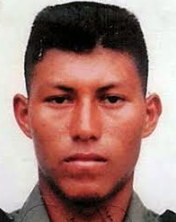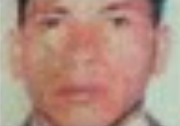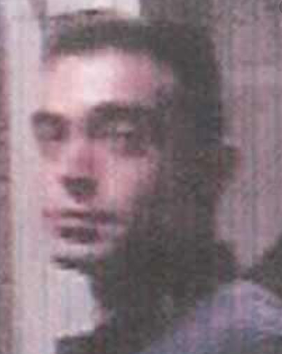
Tomás Jesús Yarrington Ruvalcaba is a Mexican politician affiliated with the Institutional Revolutionary Party. He held office as the Mayor of Matamoros from 1993 to 1995, and the Governor of Tamaulipas from 1999 to 2005. Yarrington sought nomination for the presidential elections for the PRI in 2005.

The Gulf Cartel is a criminal syndicate and drug trafficking organization in Mexico, and perhaps one of the oldest organized crime groups in the country. It is currently based in Matamoros, Tamaulipas, directly across the U.S. border from Brownsville, Texas.

Joint Operation Nuevo León-Tamaulipas is an anti-drug joint operation in two Mexican states of Tamaulipas and Nuevo León by Federal Police and the Mexican Armed Forces. The objective of the joint operation is to eliminate Los Zetas and Gulf Cartel operations in the area. So far, many cartel members have been either killed or arrested. Recently Los Zetas and the Gulf Cartel have broken relations and started fighting each other.

Roberto Javier Mora García was a Mexican journalist and editorial director of El Mañana, a newspaper based in Nuevo Laredo, Tamaulipas, Mexico. He worked for a number of media outlets in Mexico, including the El Norte and El Diario de Monterrey, prior to his assassination.

Miguel Villarreal was a U.S.-born Mexican suspected drug lord and high-ranking leader of the Gulf Cartel, a criminal group based in Tamaulipas. He was the crime boss of Reynosa, Tamaulipas. Nicknamed El Gringo in reference to his U.S. nationality, Villarreal was identified by authorities as a Gulf Cartel leader in 2010, when he allegedly commanded cells that fought Los Zetas drug cartel in northeastern Mexico. By 2011, he served as the regional kingpin in Miguel Alemán, Tamaulipas and ordered several kidnappings and killings in the South Texas border area from Mexico.

Óscar Malherbe de León is a Mexican imprisoned drug lord and former high-ranking leader of the Gulf Cartel, a criminal group based in Tamaulipas. He was the main intermediary of the Gulf Cartel in Colombia, responsible for shipping large sums of cocaine from the Cali Cartel in the 1990s. Before becoming a drug trafficker, Malherbe worked as a shoeshiner and car washer. He then turned to the auto theft industry and was recruited in 1976 by Casimiro Espinosa Campos, a former leader of a cell within the Gulf Cartel. By age 22, the Mexican authorities had charged Malherbe with at least 10 homicides. In 1984, Espinosa was killed by Juan García Abrego, then-leader of the Gulf Cartel, who later appointed Malherbe as one of his top lieutenants and moneymen.

Adán Javier Medrano Rodríguez, also known as El Licenciado, was a Mexican convicted drug lord and former high-ranking member of the Gulf Cartel, a criminal group based in Tamaulipas, Mexico. He joined the cartel during the 1990s, and was a trusted enforcer of former kingpin Osiel Cárdenas Guillén. His roles in the cartel were managing drug shipments from Guatemala to Mexico, supervising murders ordered by Cárdenas, and coordinating cash transfers from the U.S. to Mexico.

José Manuel Garza Rendón, also known as La Brocha, is a Mexican convicted drug lord and former high-ranking member of the Gulf Cartel, a criminal group based in Tamaulipas, Mexico. In 1979, he was convicted of drug-related charges in the U.S. Back in Mexico in 1985, Garza Rendón joined the Federal Judicial Police; released in 1989, he joined the Gulf Cartel. His roles in the cartel were managing drug shipments from the U.S. to Mexico and serving as bodyguard to former kingpin Osiel Cárdenas Guillén.

Gilberto García Mena, also known as El June, is a Mexican convicted drug lord and former high-ranking member of the Gulf Cartel, a criminal group based in Tamaulipas, Mexico. He began his criminal career as a small-time marijuana smuggler in his teens, and later joined the Gulf Cartel under kingpin Juan García Ábrego. García Mena was arrested by U.S. authorities in Texas while possessing marijuana in 1984, but was released without a conviction. He returned to Mexico, and established a center of operations in Nuevo León. García Mena was arrested on drug-trafficking charges in 1989, but authorities were again unable to convict him. Released in 1990, he rejoined the Gulf Cartel.

Juan Carlos de la Cruz Reyna is a Mexican convicted criminal and former high-ranking member of the Gulf Cartel, a criminal group based in Tamaulipas, Mexico. He was also a senior member in Los Zetas, the Gulf Cartel's former paramilitary group. In the 1990s, de la Cruz Reyna was an officer in the Tamaulipas State Police while working as a hitman for the Gulf Cartel. After he left the agency in 1999, he became a bodyguard for former Gulf Cartel kingpin Osiel Cárdenas Guillén, and was eventually promoted to regional leader of the cartel in Tampico. He reportedly had policemen on his payroll, and managed international drug trafficking shipments from Central and South America.

Víctor Manuel Vázquez Mireles is a Mexican drug lord and high-ranking member of the Gulf Cartel, a criminal group based in Tamaulipas, Mexico. Vázquez Mireles joined the cartel during the 1990s and was a trusted enforcer of former kingpin Osiel Cárdenas Guillén. He started his career in the cartel as one of his bodyguards and was eventually placed in charge of operations in Tamaulipas and Veracruz. He was reportedly responsible for supervising the purchase of drugs intended to be smuggled into the U.S. for distribution and for arranging the assistance of corrupt law enforcement officials in the cartel's operations.

Edelio López Falcón, commonly referred to as El Yeyo, was a Mexican suspected drug lord and former high-ranking member of the Gulf Cartel, a criminal group based in Tamaulipas, Mexico. Prior to his involvement in drug trafficking, López Falcón owned a flower business in Miguel Alemán. He was part of the cartel during the 1990s and was a trusted enforcer of the former kingpin Gilberto García Mena. López Falcón's role in the cartel was managing drug shipments from Tamaulipas to the United States. Security forces believed López Falcón was not a violent crime boss; he preferred to indulge in his personal interests, which included promoting music and entertainment, managing his restaurant chains, and running his horse-breeding business. After joining the cartel, he continued to pose as a legitimate businessman to keep a low profile.
Rolando López Salinas, also known as El Rolis, was a Mexican suspected drug lord and former high-ranking member of the Gulf Cartel, a criminal group based in Tamaulipas, Mexico. López Salinas started his criminal career as the right-hand man of his cousin Edelio López Falcón and was in charge of his security services, and later became involved in drug trafficking operations. During his criminal career, López Salinas survived two assassination attempts—one in 1999 and another in 2000—which were reportedly triggered by his differences with Gilberto García Mena, a former cartel boss. After López Falcón came into conflict with the cartel's leadership, both he and López Salinas broke ties with the cartel and forged alliances with rival criminal groups.

Raúl Hernández Barrón, also known by his alias Flanders 1, was a Mexican suspected drug lord and high-ranking member of Los Zetas, a criminal group based in Tamaulipas, Mexico. Hernández Barrón served in the Mexican Army from 1993 to 1999 as an infantry soldier. He then left and joined the Gulf Cartel under the kingpin Osiel Cárdenas Guillén, and became part of the first members of their newly formed paramilitary wing, Los Zetas. Like Hernández Barrón, most of the first members of Los Zetas were ex-military. Los Zetas was responsible for providing security services to Cárdenas Guillén and carrying out executions on the cartel's behalf. Hernández Barrón was also responsible for coordinating drug trafficking activities in Veracruz.

Raúl Alberto Trejo Benavides was a Mexican suspected drug lord and high-ranking member of Los Zetas, a criminal group based in Tamaulipas, Mexico. Trejo Benavides served in the Mexican Army from 1991 to 1999, and was a member of the Grupo Aeromóvil de Fuerzas Especiales (GAFE), the army's special forces. He joined the Gulf Cartel under kingpin Osiel Cárdenas Guillén after leaving the army, becoming one of the first members of its newly formed paramilitary wing, Los Zetas. Like Trejo Benavides, most of the first members of Los Zetas were ex-military. Los Zetas was responsible for providing security services to Cárdenas Guillén and carrying out executions on the cartel's behalf.

Jorge López Pérez, also known as El Chuta, is a Mexican suspected drug lord and high-ranking member of Los Zetas, a criminal group based in Tamaulipas, Mexico. López Pérez joined the Mexican Army in 1979. He specialized in martial arts, parachuting, explosives and guerrilla warfare tactics. In 1981, he deserted from the military and joined a cell of the Juárez Cartel, where he coordinated drug trafficking operations in Cancún. In the early 2000s, López Pérez left and worked as an independent trafficker before joining the Gulf Cartel. He became one of the first members of the cartel's newly formed paramilitary wing, Los Zetas. Like López Pérez, most of the first members of Los Zetas were ex-military. Wanted on drug trafficking charges, he is one of the last remaining fugitives from the early Zetas generation.

María Antonieta Rodríguez Mata is a Mexican former police officer and convicted drug lord. She worked as a Tamaulipas State Police officer from 1992 to 1996. During her tenure in the police, she was subject to several investigations by the National Human Rights Commission for alleged human rights violations. In the late 1990s, she became involved with the Gulf Cartel, a criminal group based in Tamaulipas, Mexico, after being hired to work under the kingpin Osiel Cárdenas Guillén. She was responsible for coordinating drug trafficking shipments from Colombia, Guatemala, and Mexico to the U.S. The drugs were often guarded by corrupt policemen and smuggled overland through Reynosa and McAllen, Texas. Her role in organized crime is unusual since she held a leadership role in the male-dominated Mexican drug trafficking industry.

Gilberto Barragán Balderas is a Mexican suspected drug lord and high-ranking member of the Gulf Cartel, a criminal group based in Tamaulipas, Mexico. He joined the cartel in the late 1990s and was a trusted enforcer of kingpin Jorge Eduardo Costilla Sánchez. Barragán Balderas was the regional boss of Miguel Alemán and helped coordinate international drug trafficking shipments from South and Central America to Mexico and the U.S. His role in the cartel also included providing them with information on the movement and location of Mexican security forces to ensure safe passage of their cocaine and marijuana shipments. In 2008, an indictment issued by the U.S. District Court for the District of Columbia detailing his criminal activities was unsealed in court.

Luis Alberto Guerrero Reyes was a Mexican suspected drug lord and high-ranking member of Los Zetas, a criminal group based in Tamaulipas, Mexico. He joined the Mexican Army in 1987, specializing in explosives, martial arts and grenade launchers. In 1999, he deserted the military and joined the Gulf Cartel under kingpin Osiel Cárdenas Guillén, becoming one of the first members of its newly formed paramilitary wing, Los Zetas. Like Guerrero Reyes, most of the first members of Los Zetas were ex-military. Los Zetas was responsible for providing security services to Cárdenas Guillén and carrying out executions on the cartel's behalf.

Omar Lorméndez Pitalúa is a Mexican suspected drug lord and high-ranking member of Los Zetas, a criminal group based in Tamaulipas, Mexico. He joined the Mexican Army in 1991 and deserted in 1999. He then joined the Gulf Cartel under kingpin Osiel Cárdenas Guillén, becoming one of the first members of its newly formed paramilitary wing, Los Zetas. Like Lorméndez Pitalúa, most of the original members of Los Zetas were ex-military. Los Zetas was responsible for providing security services to Cárdenas Guillén and carrying out executions on the cartel's behalf. In 2001, Lorméndez Pitalúa worked on assignments for Los Zetas and was responsible for ensuring that smugglers paid taxes to the Gulf Cartel and operated under their supervision in Matamoros.












